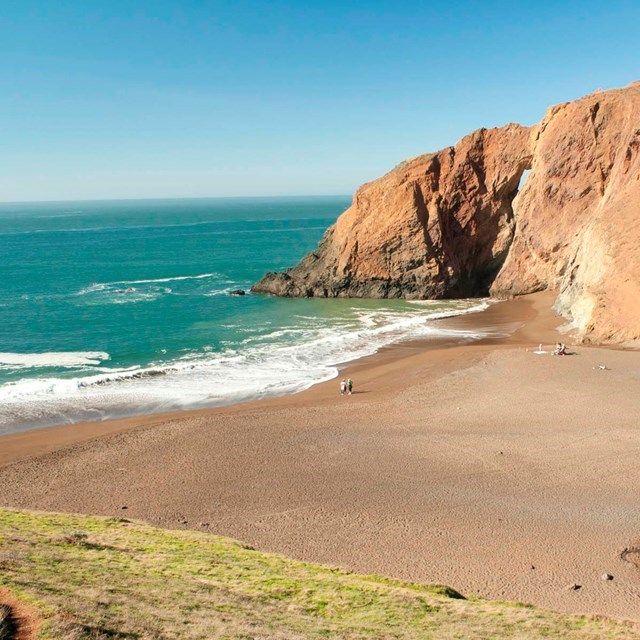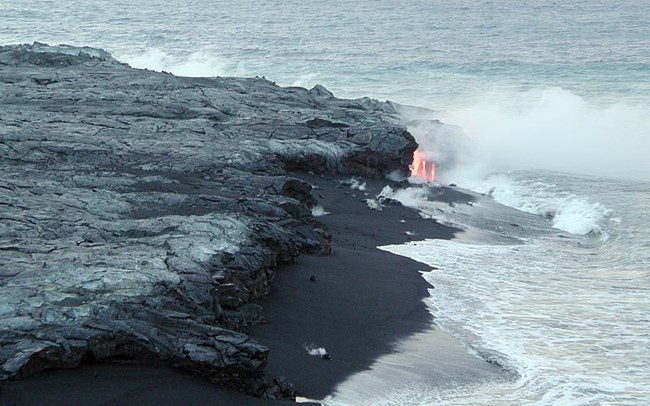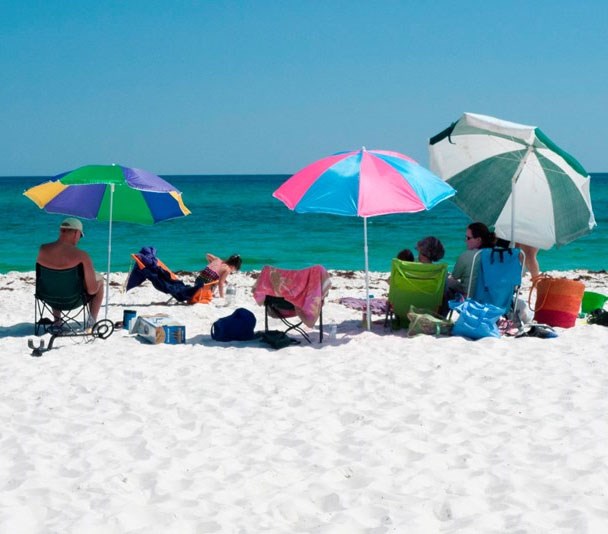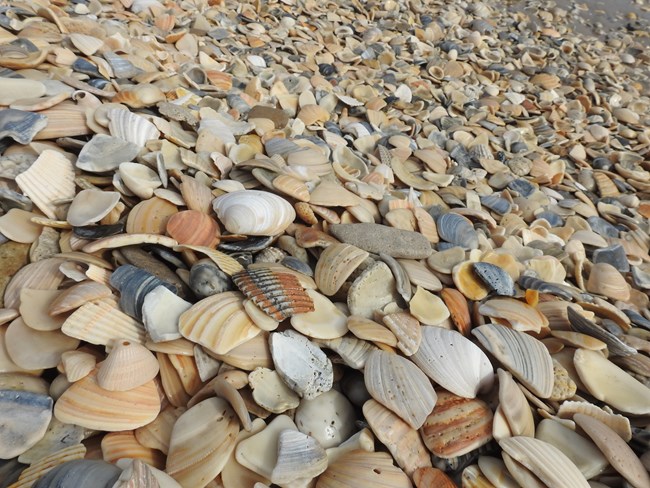Part of a series of articles titled Coastal Geology—Beach Materials.
Previous: Coastal Sediments—Parent Material
Article

Coastal sediments come in a wide range of colors: from the brilliant white sands of Gulf Islands National Seashore (Mississippi and Florida) to the black volcanic beaches of Hawaii Volcanoes National Park (Hawaii). Sand coloration depends on the parent rock from which the beach sediments have eroded.
The parent material may be from a local source (eroded from a nearby bluff or cliff) or may be transported long distances; for example, Mississippi River delta sediments may be transported from Montana.
Additional coloration of coastal sediments may occur as a result of the influence of color-producing minerals such as hematite (red), limonite (yellow), magnetite (black), and olivine (green), or the introduction of chemicals and pollutants. Still other beaches are composed mainly of calcium-carbonate shells, which are a variety of colors depending on mineral staining.

USGS photo
This black sand beach in Hawaii Volcanoes National Park is the site of some of the newest land on Earth. When molten lava cools rapidly in seawater, it shatters, forming the black sand that is washed onto the shore.

White sand beaches are typically composed of quartz-rich sediments. Due to its hardness and chemical structure, quartz is a very durable mineral that is difficult to weather and erode. Therefore, quartz is often the most prevalent mineral found in beach sediments. White sand beaches often include accessory minerals such as garnet, magnetite, and ilmenite. These minerals are often found in dark streaks along shorelines, which demonstrate the winnowing by waves and wind action of heavier minerals.

Some beaches, like the one shown here, are composed primarily of the carbonate remains of marine organisms. The calcium-carbonate shells of mollusks and gastropods may be the dominant component of these beaches and make great locations for shell collecting. If you look closely, these beaches may also include fossils such as shark teeth, whale vertebrae, or bony fish remains. In general, fossils are typically heavier than their modern counterparts, and may be different in color because of mineral staining that occurs with prolonged burial. Bone fossils may maintain textural features such as striations and porous matter. This beach at Padre Island National Seashore (Texas) is composed of shelly fragments and quartz sands.
Part of a series of articles titled Coastal Geology—Beach Materials.
Previous: Coastal Sediments—Parent Material
Last updated: March 5, 2019